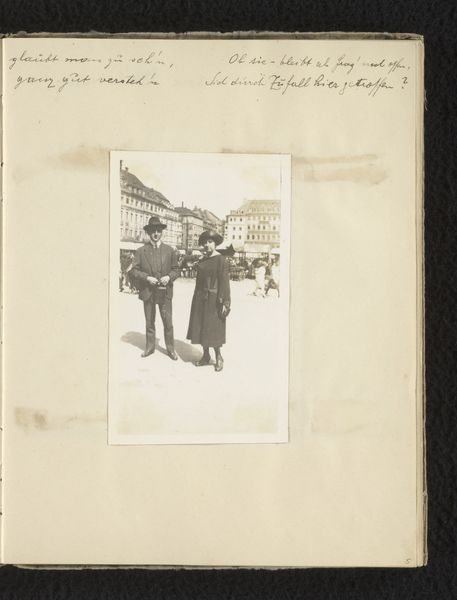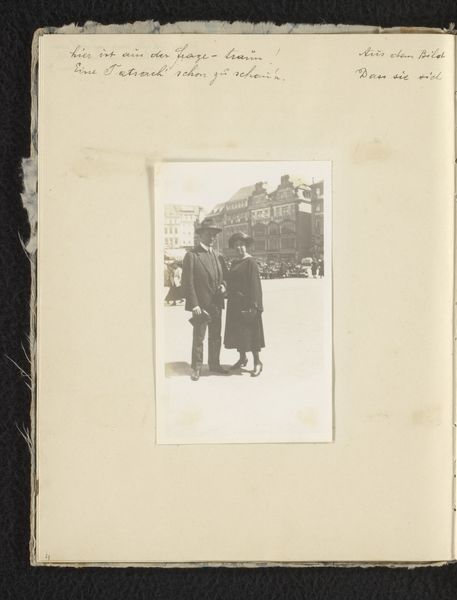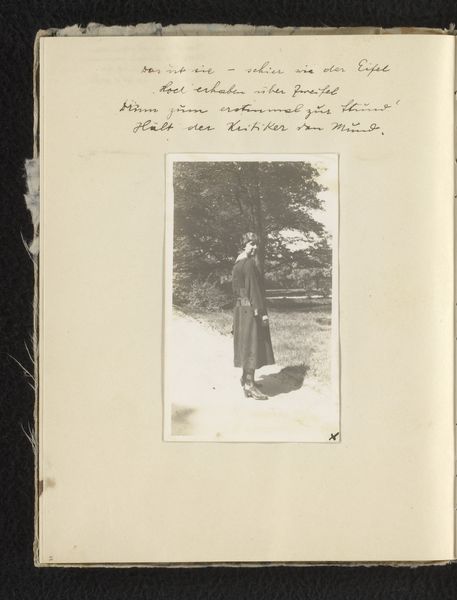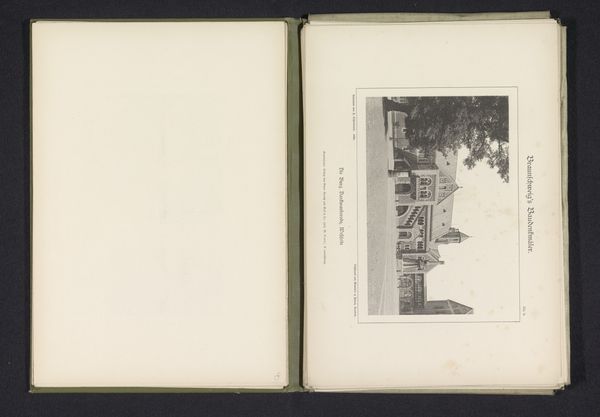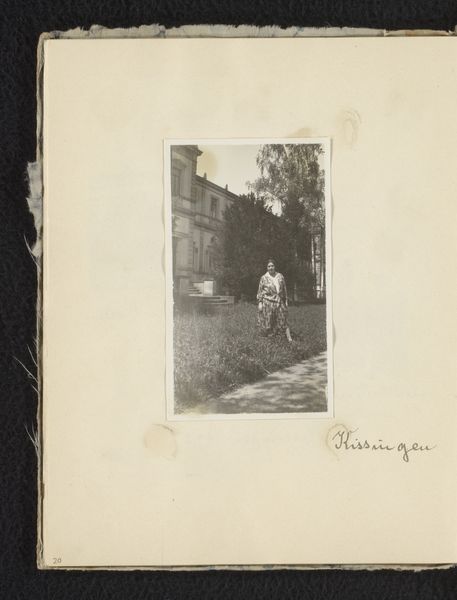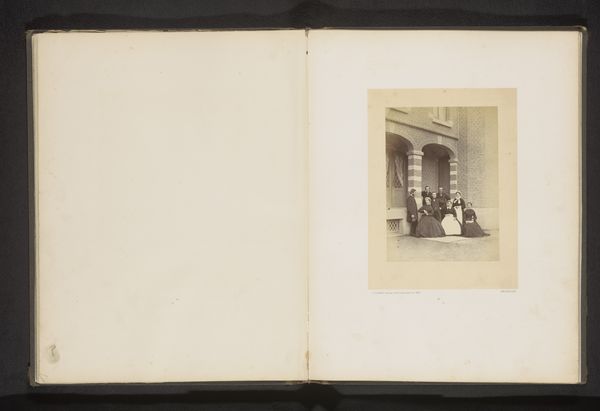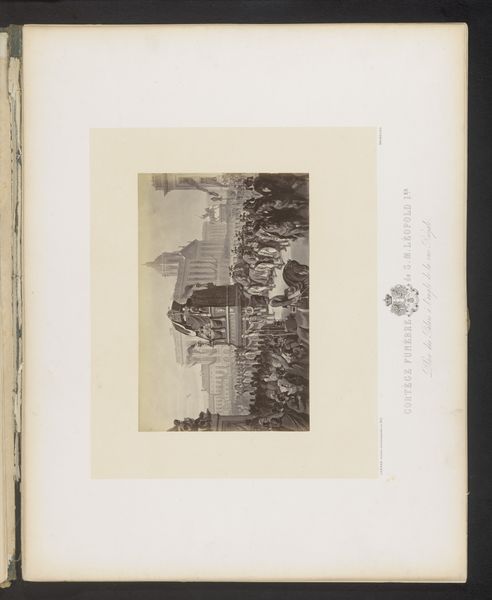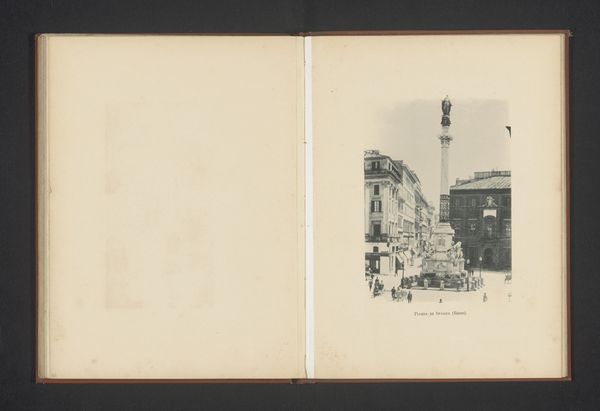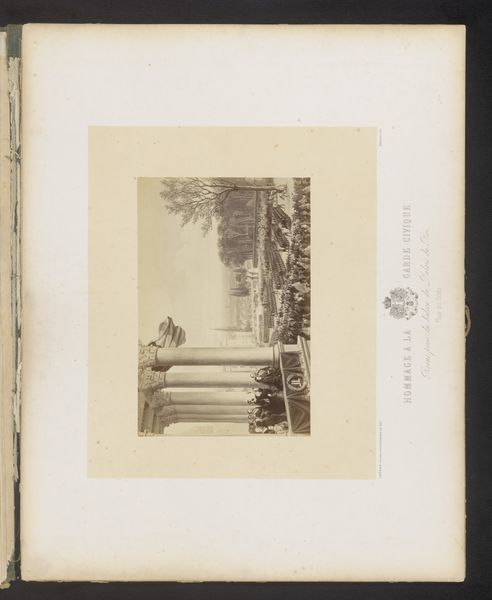
Else Wachenheimer-Moos met een onbekende vrouw in de openlucht tijdens haar verlovingstijd, 1920-1922, Dresden 1920 - 1922
0:00
0:00
photography, gelatin-silver-print
#
portrait
#
street-photography
#
photography
#
gelatin-silver-print
#
cityscape
Dimensions: height 110 mm, width 65 mm, height 205 mm, width 160 mm
Copyright: Rijks Museum: Open Domain
Editor: We’re looking at a gelatin-silver print from between 1920 and 1922, titled "Else Wachenheimer-Moos with an unknown woman outdoors during her engagement in Dresden." It captures two women standing in what appears to be a bustling city square. It has a casual feel and the image looks mounted in some sort of notebook, so it appears as part of a larger personal narrative. What stands out to you about this piece? Curator: For me, it's the way this photograph allows us to consider the materiality of memory itself. Gelatin-silver prints, common then, now become historical objects. Think about the economic factors that made photography accessible to a wider public, allowing for images like this to be created and kept, and for subjects that wouldn’t be captured in traditional, expensive painting practices. Editor: That's interesting. So you see it as a record of shifting cultural accessibility, and a record of a material past? Curator: Exactly. The photograph gives us a glimpse into the everyday lives and experiences of women during this period. It hints at how technologies like photography allowed more people to construct and preserve their personal histories, stepping outside traditionally dominant means of commemoration like painting or sculpture. This contrasts the individual experience against grand narratives and classical means of visual productions. What questions does this raise for you? Editor: I hadn’t considered it in those terms, but it does make me think about who gets to leave their mark, and the changing tools for doing so. I think I see it in a completely different way now. Curator: Hopefully it gives insight into how technological innovations transform social relationships with materiality, cultural capital, and our own history.
Comments
No comments
Be the first to comment and join the conversation on the ultimate creative platform.
